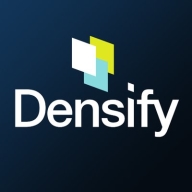

Densify and CloudCheckr compete in cloud optimization and management. CloudCheckr holds the upper hand due to its broader adaptability and extensive capabilities despite Densify's strengths in advanced analytics.
Features: Densify offers predictive analytics, streamlined resource optimization, and enhanced automation. CloudCheckr provides detailed cost analysis, compliance support, and multi-cloud adaptability.
Room for Improvement: Densify could enhance its multi-cloud support, offer more comprehensive compliance features, and provide greater user interface flexibility. CloudCheckr may improve integration with specific analytics tools, refine its automation capabilities, and offer more specialized optimization solutions.
Ease of Deployment and Customer Service: Densify offers streamlined deployment with analytics insights, requiring deep integration for peak performance. CloudCheckr ensures easy deployment with comprehensive customer support, facilitating smooth operations for complex cloud environments.
Pricing and ROI: Densify provides transparent pricing aimed at long-term ROI through analytics. CloudCheckr's higher initial setup cost is justified by extensive features that promote faster ROI across diverse cloud platforms.
| Product | Market Share (%) |
|---|---|
| CloudCheckr | 1.3% |
| Densify | 0.9% |
| Other | 97.8% |


| Company Size | Count |
|---|---|
| Small Business | 2 |
| Midsize Enterprise | 1 |
| Large Enterprise | 5 |
| Company Size | Count |
|---|---|
| Small Business | 1 |
| Midsize Enterprise | 1 |
| Large Enterprise | 9 |
Densify is a hybrid cloud and container resource management platform that makes workloads self-aware of their precise resource requirements and automates the resource management and selection process. This solution helps you control your cloud spend and also helps your apps perform and scale better. Densify enables you to match your cloud requirements with the optimal cloud supply. Additionally, Densify is the only technology that leverages patented, predictive machine learning-powered analytics to perform advanced modeling of workload patterns, and provide precise optimization directives. It is ideal for cloud engineers, container platform owners, and IT finance.
Densify works by:
Densify Features
Densify has many valuable key features. Some of the most useful ones include:
Densify Benefits
There are many benefits to implementing Densify. Some of the biggest advantages the solution offers include:
We monitor all Cloud Management reviews to prevent fraudulent reviews and keep review quality high. We do not post reviews by company employees or direct competitors. We validate each review for authenticity via cross-reference with LinkedIn, and personal follow-up with the reviewer when necessary.